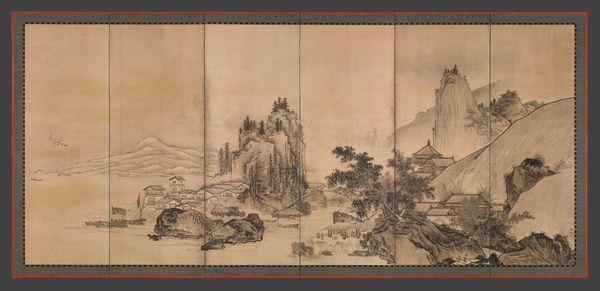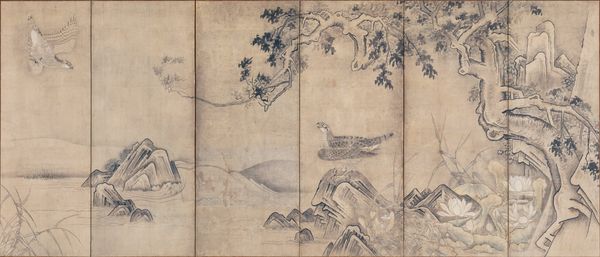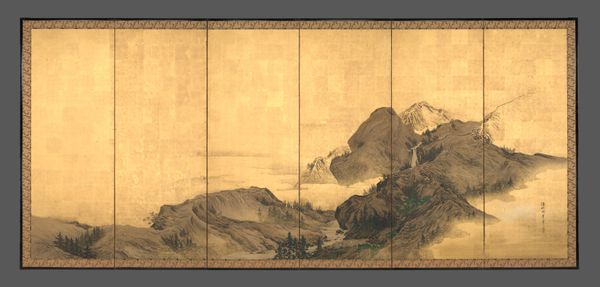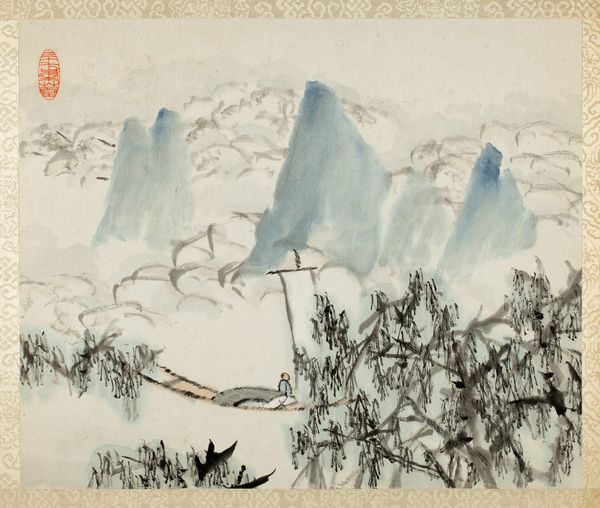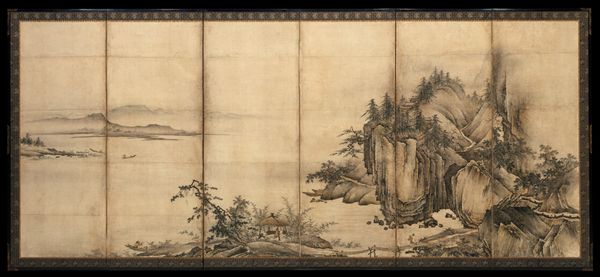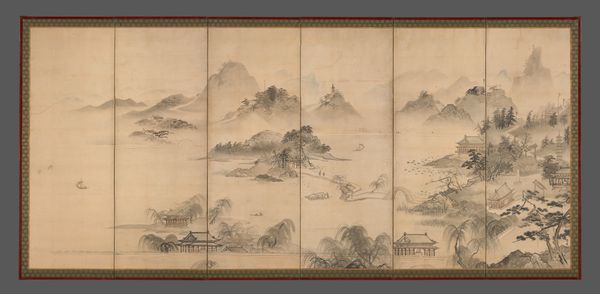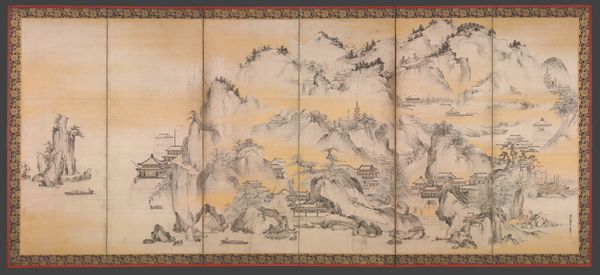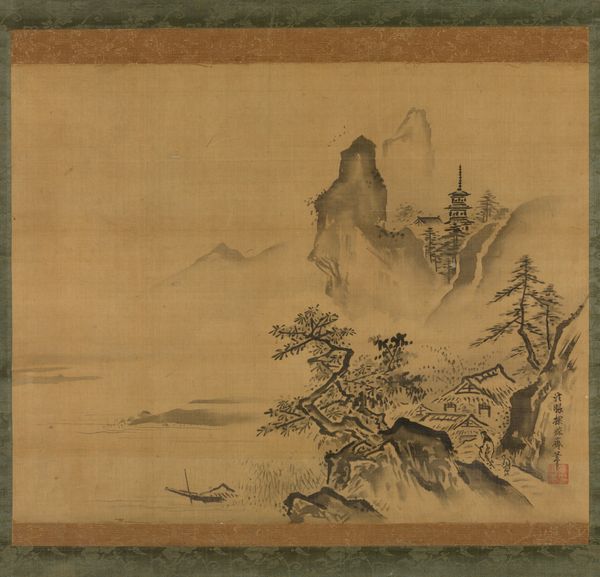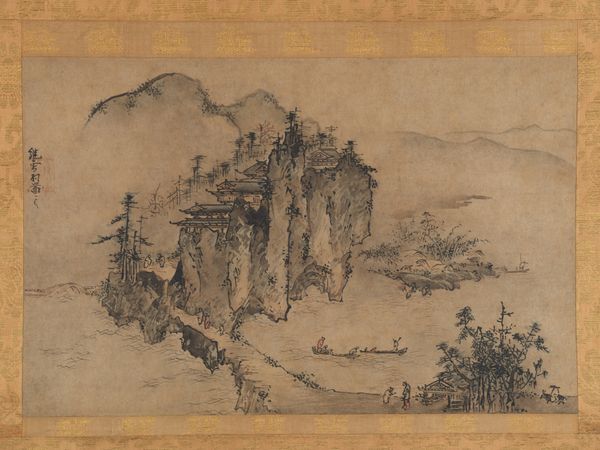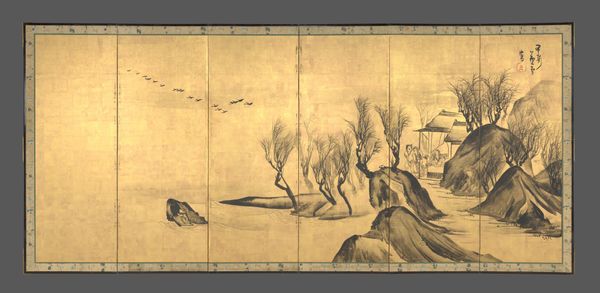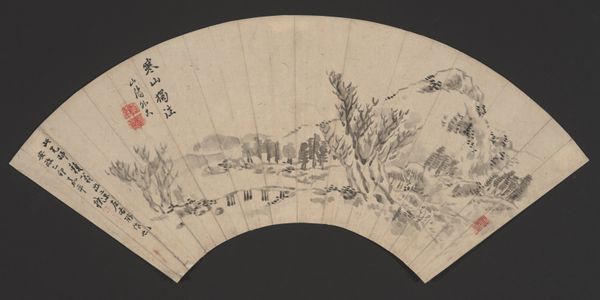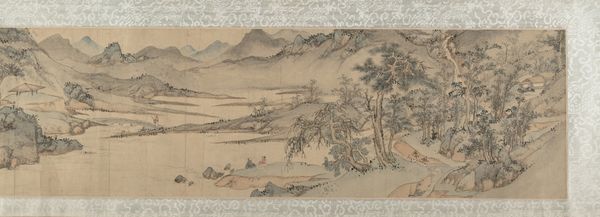
Two Views from the Eight Views of the Xiao and Xiang Rivers 1500 - 1533
0:00
0:00
Dimensions: Image (a): 18 1/16 × 11 3/4 in. (45.8 × 29.9 cm) Overall with mounting (a): 51 15/16 × 16 3/8 in. (132 × 41.6 cm) Overall with knobs (a): 51 15/16 × 18 1/8 in. (132 × 46 cm) Image (b): 18 1/8 × 11 3/4 in. (46 × 29.9 cm) Overall with mounting (b): 52 1/16 × 16 5/16 in. (132.2 × 41.5 cm) Overall with knobs (b): 52 1/16 × 18 1/8 in. (132.2 × 46 cm)
Copyright: Public Domain
Curator: Before us is a set of ink and color woodblock prints on paper titled "Two Views from the Eight Views of the Xiao and Xiang Rivers," crafted by Kantei sometime between 1500 and 1533. Editor: Immediately striking. The monochrome palette and the wispy ink washes give off an ephemeral, almost dreamlike quality. The geometric structures are sharp contrasts against the misty backgrounds. Curator: Indeed, the manipulation of line and wash is quite sophisticated. The artist uses empty space strategically, conforming to principles of linear perspective and chiaroscuro which adds a tactile quality and realism. How do you see the influence of Zen aesthetics at play in the negative space? Editor: The sociopolitical context is essential. Muromachi period art like this emerged amidst power shifts between the Shogunate and regional lords. This style catered to the tastes of Zen Buddhist circles that advised the ruling elite, but beyond their religious functions, these landscapes became symbols of order, and also idealized escape from political turmoil. Curator: Note also how line directs the viewer's gaze in an almost architectural fashion. Linear structure in both of these landscapes is reinforced by geometric repetition which conveys stability, further emphasizing themes of order. Do you agree that this contrasts with more evocative forms of traditional Ukiyo-e works that often employ color more explicitly? Editor: Well, earlier monochrome works, especially from Song dynasty China, profoundly influenced the development of ink painting in Japan. But as landscape themes developed within a society controlled by a military elite, we can see an appeal to the order those structures maintained within a constantly chaotic backdrop. This artwork reflects an ideal of social, even political stability during the Muromachi era, subtly affirming elite values while simultaneously providing visual escapism. Curator: That certainly recontextualizes my structural interpretation! I had fixated on the spatial dynamics, the balanced interplay of forms but what you describe allows an avenue into these serene vistas through its social fabric. Editor: Right, and what might initially seem purely formal actually reflects deeper cultural attitudes towards governance. Appreciating the delicate linework takes a new depth when understood within the context of political ideology.
Comments
No comments
Be the first to comment and join the conversation on the ultimate creative platform.
